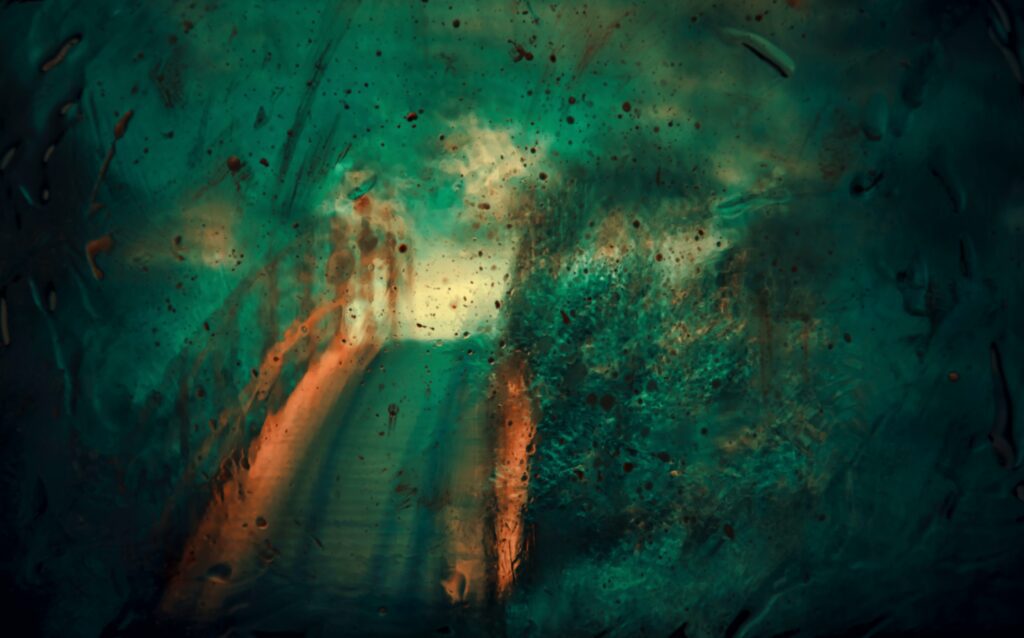Imagine strolling through a vibrant shopping center, surrounded by stunning artwork that ignites your imagination and transports you to another world. In this article, we explore the captivating realm of artistic elements in shopping centers, where creativity and commerce intertwine to create a truly unique experience. From awe-inspiring sculptures to mesmerizing murals, join us as we delve into the visual journey that awaits you in these artistic havens.



This image is property of images.unsplash.com.
The Conceptual Basis for Art in Shopping Centers
The Role of Art in Creating Attraction
When it comes to shopping centers, attracting customers is crucial for success. And one highly effective way to create attraction is through art. Art has the power to captivate and engage people, drawing them into the shopping center and making it a destination in itself. Artistic elements can serve as a visual magnet, enticing people to explore and discover the unique offerings of the shopping center.
Enhancement of Aesthetic Value
Beyond attracting customers, art also enhances the aesthetic value of shopping centers. By incorporating artistic elements, shopping centers can transform what would otherwise be mere commercial spaces into immersive and visually captivating environments. The presence of art elevates the overall ambiance, making the shopping experience more enjoyable and memorable for visitors.
Art as a Symbol of Status
Art in shopping centers can also serve as a symbol of status. By selecting and displaying high-quality art pieces, shopping centers communicate sophistication, refinement, and exclusivity. This not only appeals to a certain demographic of customers but also positions the shopping center as a destination for those seeking elevated experiences. The presence of art can create a sense of prestige and elevate the perceived value of the shopping center.
Understanding the Psychology behind Shopping Centers’ Artwork
How Art Influences Buying Behavior
Art has the power to influence buying behavior in shopping centers. Certain art pieces or installations can evoke emotions and create a favorable atmosphere that encourages customers to spend more time and money. Well-placed artwork can also create a sense of luxury and exclusivity, making customers more willing to indulge and make purchases. The psychology behind art and buying behavior is a valuable tool for shopping center designers and marketers to leverage.
Artwork and Emotional Responses
Artwork has a significant impact on emotional responses and can shape the overall mood of a shopping center. Bright, vibrant colors can evoke feelings of energy and excitement, while serene and calming artwork can create a more relaxed and peaceful atmosphere. By deliberately selecting art pieces that align with the desired emotional experience, shopping centers can enhance the overall customer experience and create a positive association with their brand.
Impacts on Customer Satisfaction and Loyalty
The presence of art in shopping centers can contribute to higher levels of customer satisfaction and loyalty. Artistic elements create an engaging and visually stimulating environment that goes beyond the typical shopping experience. When customers feel a connection to the shopping center on an emotional level, they are more likely to return and recommend it to others. Art can, therefore, play a key role in building customer loyalty and driving repeat business.



This image is property of images.unsplash.com.
Common Types of Art Used in Shopping Centers
Installation Art
Installation art is a popular choice for shopping centers due to its large-scale and immersive nature. These art installations often take up significant space and can span multiple floors or outdoor areas. They create a visually striking focal point that captivates visitors and encourages exploration. Whether it’s a captivating sculpture, a thought-provoking display, or an interactive installation, installation art adds a unique and memorable element to a shopping center.
Interactive Displays
Interactive displays have become increasingly popular in modern shopping centers. These displays often incorporate technology, allowing visitors to engage with the artwork in a hands-on and interactive manner. Whether it’s a touchscreen display, motion sensors, or virtual reality experiences, interactive artwork adds a layer of excitement and engagement, creating a dynamic and participatory experience for shoppers.
Mural Paintings
Mural paintings have long been a staple of the urban art scene, and their popularity has extended to shopping centers. These large-scale paintings bring color, vibrancy, and artistic expression to otherwise plain walls. Mural paintings can be a local collaboration or feature renowned artists, providing an opportunity to showcase and support the local art community. They add personality and character to shopping centers, turning them into visually stimulating spaces.
Sculptures
Sculptures are timeless and versatile art forms that can be incorporated into both indoor and outdoor spaces in shopping centers. Whether it’s a striking metal sculpture in a central plaza or a delicate sculpture placed strategically in a garden area, sculptures add a three-dimensional element to the overall aesthetic. Sculptures can range from classic and traditional to abstract and contemporary, allowing for a wide variety of artistic expressions to be displayed.
Fountain Displays
Fountain displays not only serve a functional purpose in providing water features but also add an artistic touch to shopping centers. Fountains can be designed as interactive displays, incorporating lights and music to create a multisensory experience. The sound of water and the captivating visual effects of fountains create a soothing and enchanting atmosphere, providing a moment of relaxation for shoppers.
The Role of Lighting in Highlighting Artistic Features
Importance of Proper Lighting
Proper lighting is essential in showcasing and highlighting the artistic features of a shopping center. Lighting plays a significant role in creating ambiance, directing attention, and enhancing the overall visual impact of art installations. By strategically placing spotlights, highlighting specific elements, or using ambient lighting techniques, the artistic features can be truly appreciated by visitors.
Types of Lighting Techniques
There are various lighting techniques that can be used to enhance the artistic elements in shopping centers. Up-lighting, where lights are placed below the artwork and directed upwards, can create a dramatic effect and draw attention to the sculpture or installation. Backlighting can be used to create a halo effect, adding depth and dimension to the artwork. Ambient lighting can set the overall mood and create a cohesive and harmonious environment. Choosing the right lighting techniques depends on the specific artistic elements and desired visual impact.
Case Studies of Effective Lighting Solutions
Several shopping centers have successfully utilized lighting to highlight their artistic features. For example, The Mall of Dubai features a stunning light show that illuminates the world’s largest indoor hanging sculpture. The use of dynamic lighting effects enhances the visual impact of the sculpture, creating a mesmerizing experience for visitors. Another example is the Illuminated River project in London, where strategically placed lights illuminate various bridges across the River Thames, transforming them into breathtaking works of art.



This image is property of images.unsplash.com.
Landscaping: The Adds-On to the Artistic Charm
Gardens and Green Spaces as Art Elements
In addition to artwork, shopping centers can incorporate gardens and green spaces as art elements. Landscaping design can be used to create visually appealing outdoor areas that serve as a seamless extension of the artistic ambiance inside the shopping center. Lush gardens, curated plant displays, and thoughtfully designed outdoor seating areas provide a serene and picturesque backdrop for visitors to relax and appreciate the art.
The Importance of Landscaping Design
Landscaping design plays a crucial role in creating a cohesive and harmonious environment in shopping centers. It involves careful consideration of elements such as plant selection, color schemes, textures, and spatial arrangement. The goal is to create a visually pleasing and inviting outdoor space that complements the artwork and overall aesthetic of the shopping center. Well-designed landscaping enhances the overall ambiance and encourages visitors to spend more time exploring the outdoor areas.
Sustainable Landscaping Practices
An increasing focus on sustainability has encouraged shopping centers to incorporate eco-friendly landscaping practices. This includes the use of native plants, efficient irrigation systems, and environmentally conscious maintenance practices. By prioritizing sustainability in landscaping design, shopping centers can enhance their reputation as socially responsible establishments while contributing to the preservation and conservation of the natural environment.
Analyzing Successful Cases of Art-Focused Shopping Centers
Case Study 1
One notable example of an art-focused shopping center is Westfield London. The shopping center features a collection of immersive art installations, challenging the traditional concept of shopping spaces. From interactive light displays to large-scale sculptures, the art elements create a sense of wonder and delight for visitors. Westfield London has successfully positioned itself as a cultural hub, attracting not only shoppers but also art enthusiasts and tourists looking for unique experiences.
Case Study 2
Another case study is the ArtScience Museum in Singapore’s Marina Bay Sands. The museum is integrated within the shopping center, blurring the lines between art, science, and entertainment. The unique design of the museum’s architecture itself is a work of art, and its rotating exhibitions and interactive displays further enhance the overall artistic experience. The ArtScience Museum has become a must-visit destination for locals and tourists alike, offering a blend of educational and immersive art experiences.
Case Study 3
The Galleria Vittorio Emanuele II in Milan, Italy, is an iconic shopping center that showcases the fusion of art and architecture. The grandeur of its ornate interior, featuring intricate mosaic floors and ornamental ceilings, creates a sense of opulence and historical significance. Its stunning glass dome acts as a centerpiece, allowing natural light to flood the space and accentuate the artistic details. The Galleria Vittorio Emanuele II embodies the idea that shopping centers can be more than just commercial spaces – they can be works of art themselves.



This image is property of images.unsplash.com.
Designing Art Spaces for Social Interaction
Art as a Meeting Point
Art can serve as a meeting point within shopping centers, encouraging social interaction and community engagement. By intentionally designing spaces where art installations are placed, shopping centers can create gathering spots for visitors to admire, discuss, and connect over shared interests. These art spaces become more than just aesthetic elements; they become catalysts for fostering meaningful connections and creating a sense of belonging.
Creating Conversation Pieces
Artwork in shopping centers can act as conversation pieces, sparking dialogue and interaction among visitors. Whether it’s a bold and provocative installation or a whimsical and playful sculpture, art that provokes curiosity and invites interpretation encourages people to engage with one another. By creating conversation pieces, shopping centers can build a sense of community and establish themselves as cultural destinations that go beyond the act of shopping.
Artwork Designed for Selfies and Social Media Sharing
In the age of social media, designing artwork that is “Instagrammable” has become increasingly important for shopping centers. Art installations that are visually appealing and provide unique backdrops for photoshoots encourage visitors to share their experiences online, generating free publicity and word-of-mouth marketing. Shopping centers can leverage this trend by intentionally incorporating elements that are photogenic and shareable, further fueling the desire for visitors to capture and share their experiences.
The Prospects of Digital Art in Shopping Centers
Understanding Digital Art
Digital art refers to artistic creations that are made using digital technology. It encompasses various forms such as digital paintings, interactive digital displays, projection mapping, and virtual reality experiences. Digital art offers endless possibilities for creativity and innovation, making it an exciting prospect for shopping centers looking to push boundaries and offer unique experiences to their visitors.
Advantages of Incorporating Digital Art
Incorporating digital art into shopping centers brings several advantages. One major advantage is the ability to create dynamic and interactive experiences that can adapt and change over time. Digital art installations can be easily updated, allowing shopping centers to keep their visual elements fresh and engaging. Additionally, digital art can seamlessly integrate with technology, allowing for personalized and customized experiences for visitors. The immersive and futuristic nature of digital art can attract a younger demographic and position the shopping center as forward-thinking and technologically advanced.
Predicting Future Trends
As technology continues to advance, the possibilities for digital art in shopping centers are endless. One future trend could be the incorporation of augmented reality (AR) and mixed reality (MR) experiences, allowing visitors to interact with digital elements overlaid onto the physical environment. Another trend could be the use of artificial intelligence (AI) to create dynamic and responsive digital art installations that adapt and evolve based on visitor interactions. The future of digital art in shopping centers holds promise for even more immersive and interactive experiences.



This image is property of images.unsplash.com.
The Challenges of Integrating Art in Shopping Centers
High Initial Costs
One of the primary challenges of integrating art in shopping centers is the high initial costs. Acquiring and commissioning artwork from renowned artists or creating large-scale installations can be a significant investment. Shopping centers must budget for the procurement, installation, and maintenance of the artwork. However, it is essential to consider art as an investment in the overall branding and customer experience of the shopping center, as it can drive increased foot traffic and customer loyalty in the long run.
Maintenance and Upkeep
Once art is integrated into shopping centers, ongoing maintenance and upkeep are necessary to preserve the quality and integrity of the artwork. This includes regular cleaning, repairs, and occasionally replacing or refreshing pieces. Adequate resources must be allocated to ensure that the artwork remains in optimal condition. Shopping centers must also consider the impact of environmental factors such as lighting, temperature, and humidity on the preservation of the artwork.
Choosing Art that Reflects the Brand Image
Selecting the right art that reflects the brand image and resonates with the target audience can be a challenge. Shopping centers must carefully curate the artwork to ensure that it aligns with the overall theme and ambiance of the space. The artwork should complement the shopping center’s aesthetics, target demographic, and brand values. It may be necessary to work with art consultants or curators to ensure that the chosen art pieces effectively communicate the desired brand message.
The Future of Art in Shopping Centers
The Impact of E-commerce
The rise of e-commerce has presented challenges for traditional brick-and-mortar establishments, including shopping centers. However, art can be a distinguishing factor that sets physical shopping centers apart from online retailers. By creating immersive and visually captivating environments, shopping centers can offer an experiential element that cannot be replicated online. Art in shopping centers provides a unique and tangible experience that appeals to customers seeking more than just convenience and efficiency.
Need for More Exclusive Installations
As the art scene continues to evolve and become more accessible, there is a growing demand for exclusive and limited-edition art installations. Shopping centers can tap into this trend by collaborating with renowned artists or art collectives to create exclusive pieces. These installations can generate excitement and attract art enthusiasts and collectors. By offering exclusive art experiences, shopping centers can position themselves as destinations for both shopping and art appreciation.
Art as a Distinctive Selling Proposition
In an increasingly competitive market, shopping centers need to differentiate themselves to attract and retain customers. Art can serve as a distinctive selling proposition that sets a shopping center apart from its competitors. By curating a unique collection of artwork and creating an immersive artistic experience, shopping centers can establish themselves as cultural destinations that go beyond the act of shopping. Art becomes an integral part of the shopping center’s identity and a compelling reason for customers to choose one center over another.
In conclusion, art plays a vital role in creating attraction, enhancing aesthetic value, and symbolizing status in shopping centers. It influences buying behavior, evokes emotional responses, and impacts customer satisfaction and loyalty. Various types of artwork, such as installations, interactive displays, mural paintings, sculptures, and fountain displays, can be incorporated in shopping centers to enhance their visual appeal. Proper lighting techniques and landscaping design further elevate the artistic features. Successful cases of art-focused shopping centers, both local and international, provide inspiration and insights. Art spaces designed for social interaction, the prospects of digital art, and the challenges of integrating art highlight the dynamic nature of incorporating art in shopping centers. Despite the rise of e-commerce, art continues to be a distinctive selling proposition, offering an experiential element that sets physical shopping centers apart. By embracing art, shopping centers can create unique and captivating environments that resonate with customers and contribute to the enjoyment of their shopping experience.
